The Award for Miner’s wages and conditions established in 1906 expired on December 31st 1908. The Mining Manager’s Association held talks with the union representatives early in the month, but the Broken Hill Proprietary Company, Chaired by John Darling, and three other companies announced that due to low metal prices, they would discontinue the 12.5% increase in wages promised in 1906. A mass meeting of unionists working on the BHP, British, Junction and Block 10 Mines voted to stop work while seeking arbitration. The mines in question, ‘locked out’ all but essential workers. On January 1st the union picket lines were drawn and those who crossed the picket lines were accosted by union men and women.
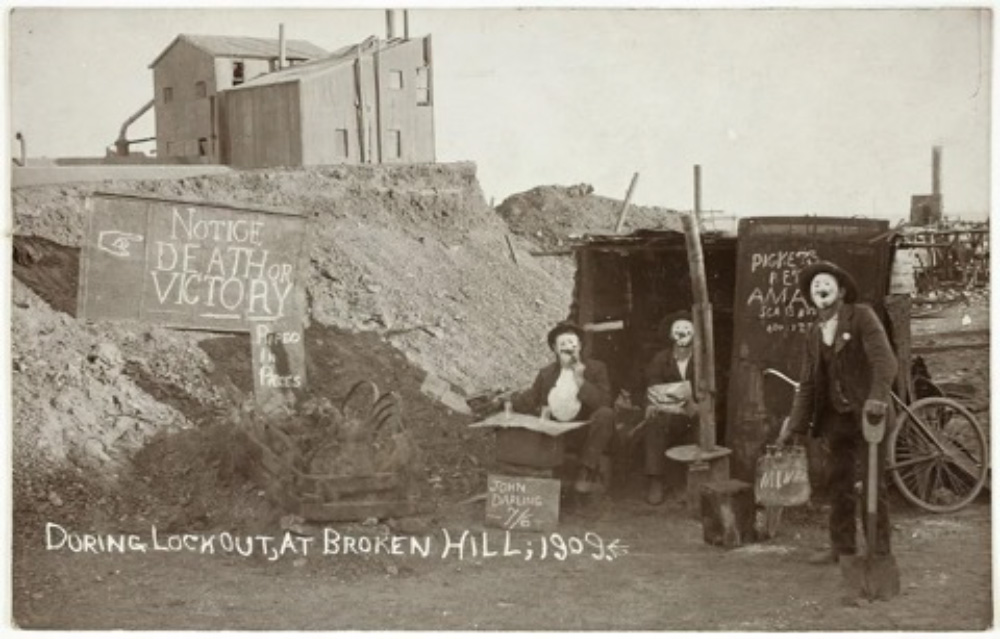
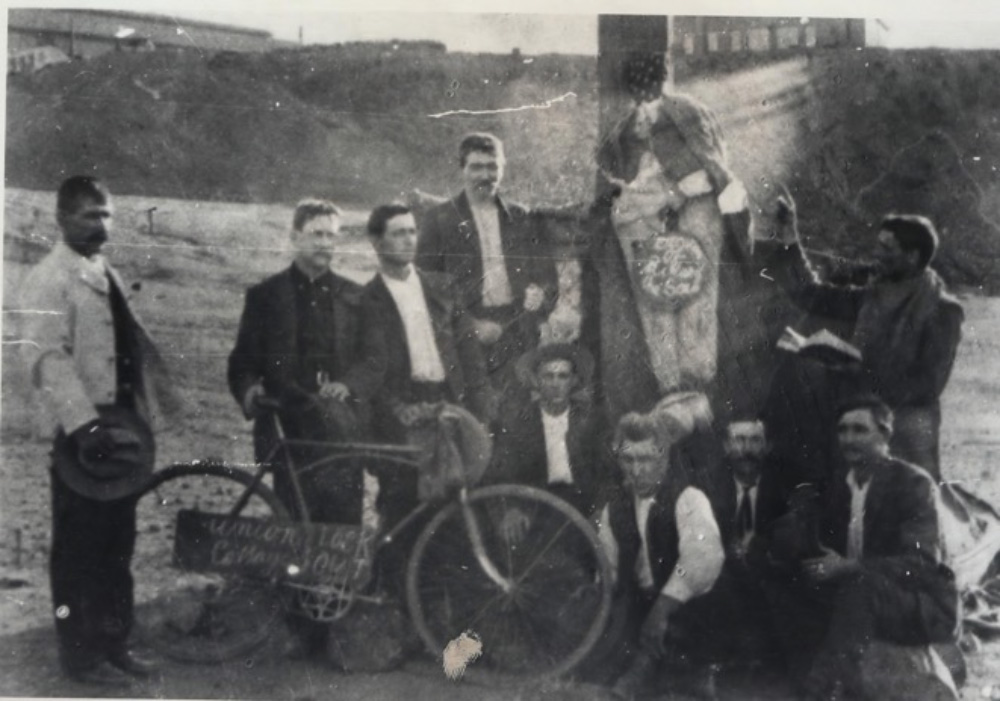
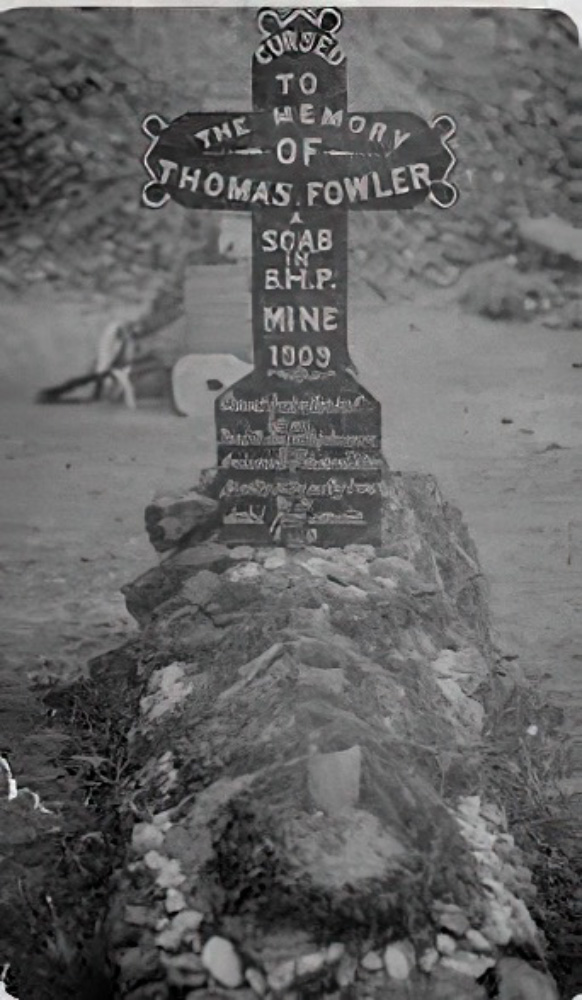
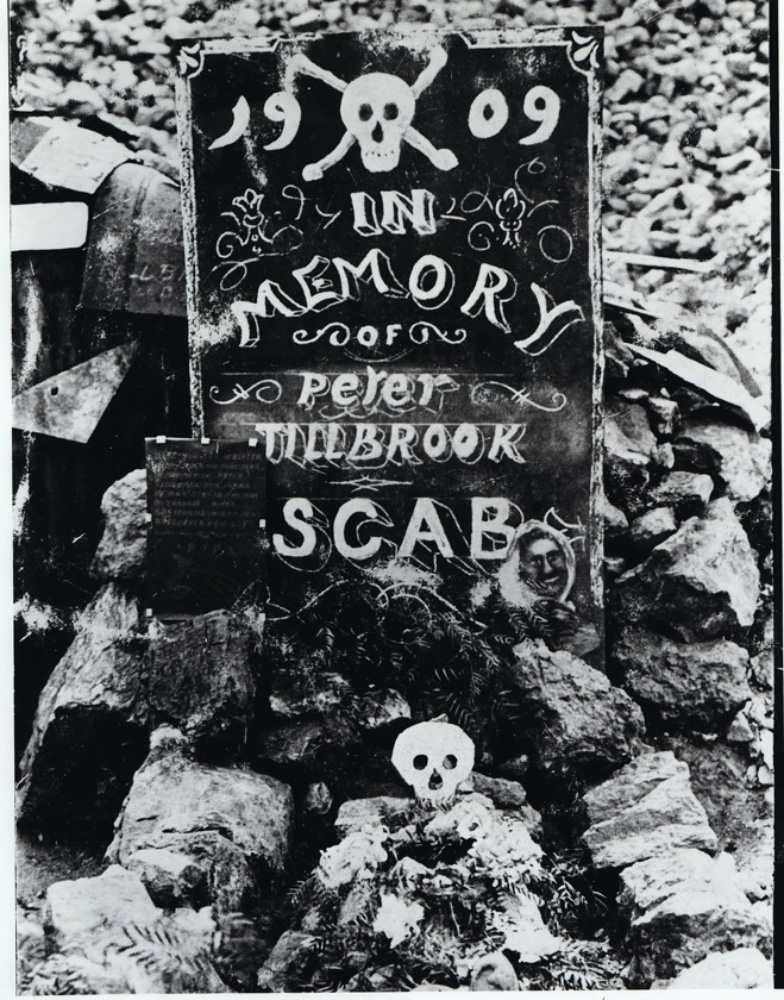
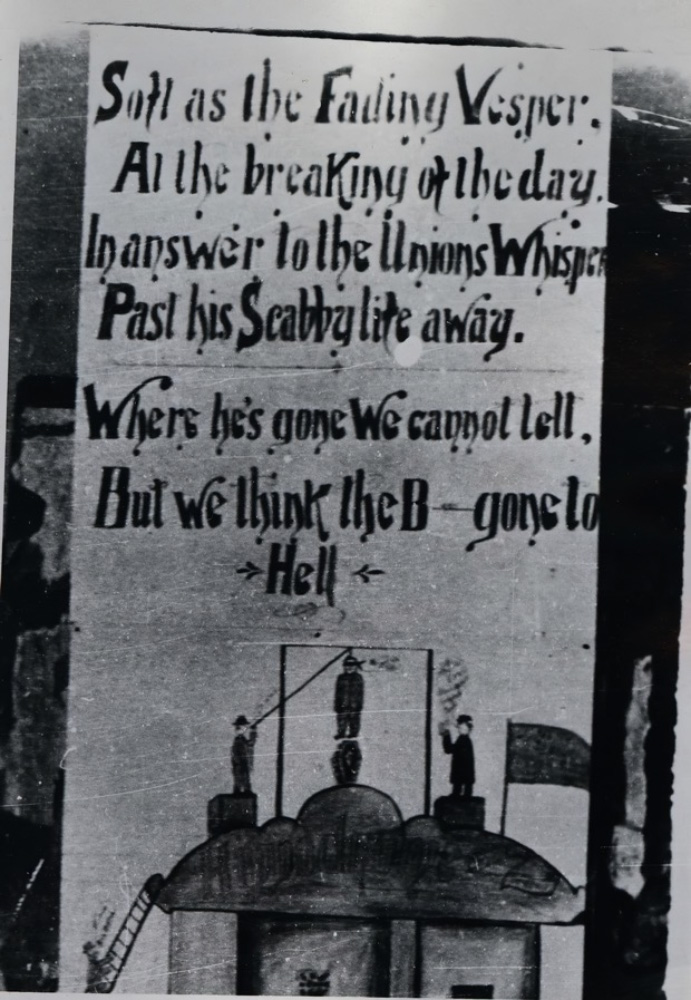
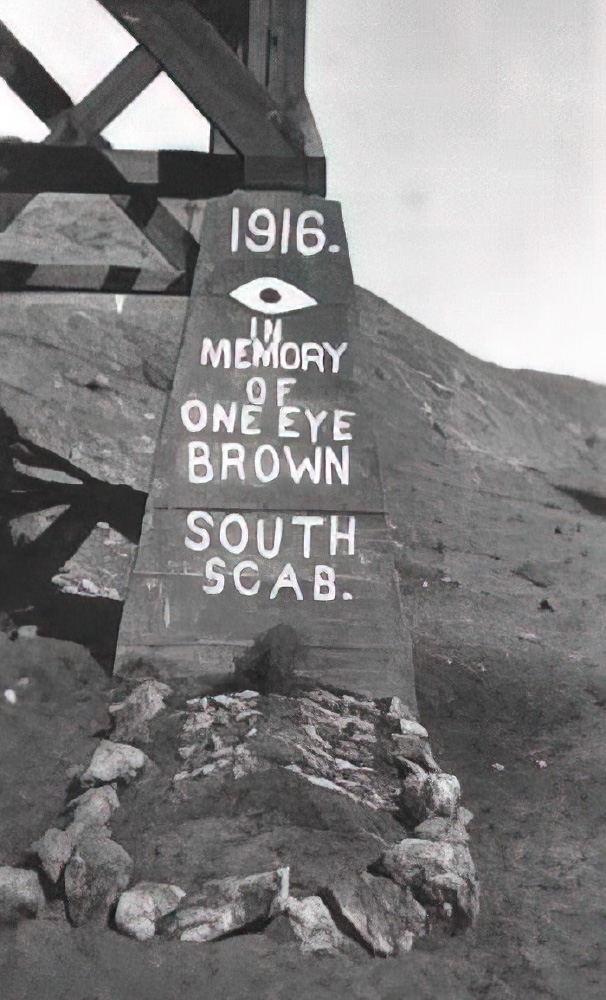
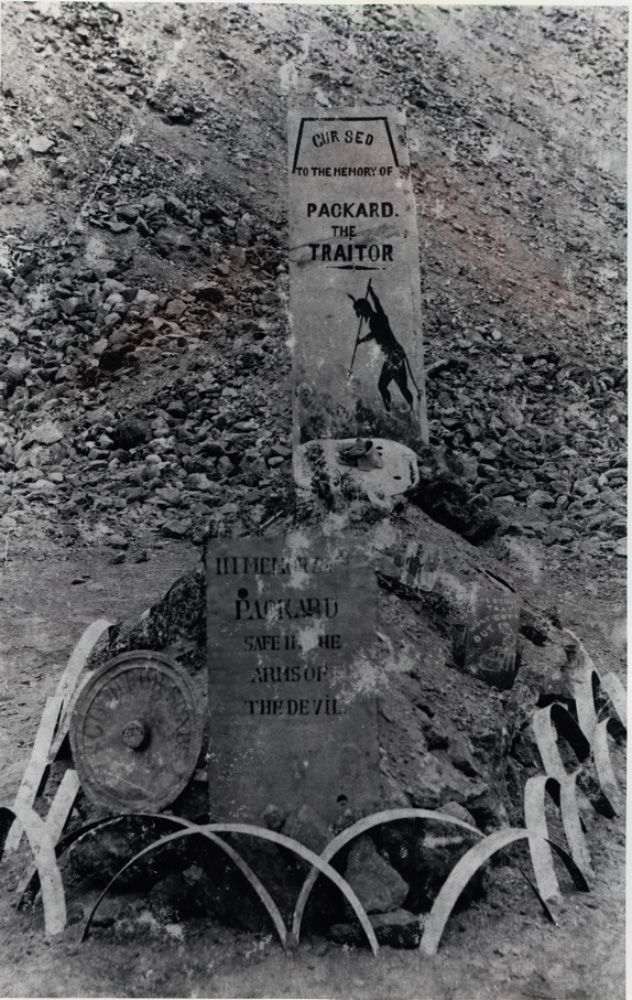
For the men on the picket lines, four hour shifts of standing and waiting weighed heavily upon them. The AMA established a wood yard, co-op store and bakery to relieve distress. Pickets were paid in monthly food coupons according to time spent on the lines. They made mock graves and held funerals to relieve the anger and powerlessness they felt. Mining Managers and Company Directors, such as John Darling of the Broken Hill Propriety Company, were often targeted. The mock graves and epitaphs were directed at union-breaking labourers including shift bosses, ‘black-legs’ and ‘scabs’1.
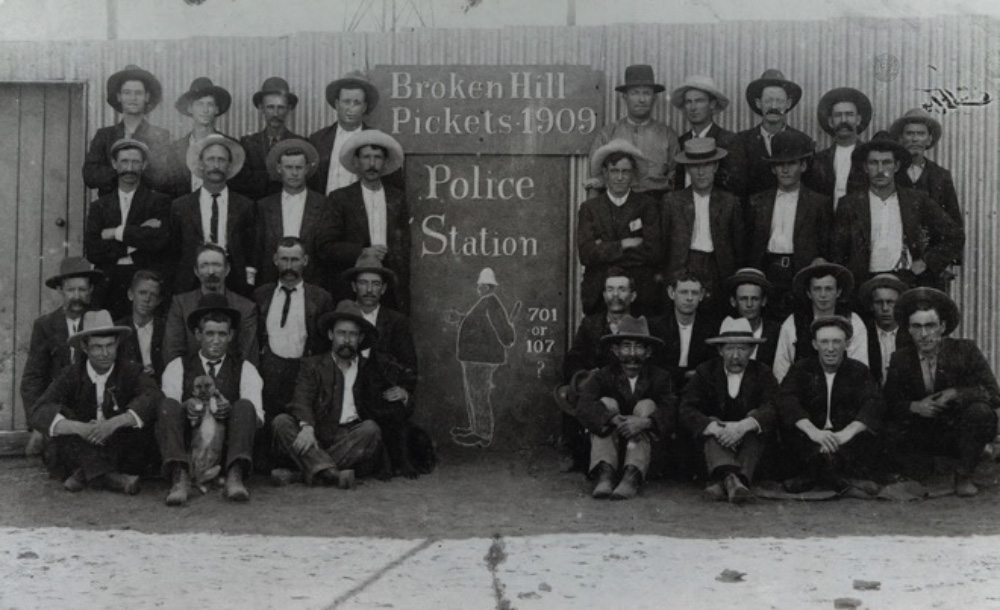
Special Constables, brought in from Sydney, manned their own lines of defence, protecting the mine offices. Ironically, they constructed a mock grave for the visiting British Socialist, Tom Mann, who was rousing the unionists to solidarity and a class revolution.
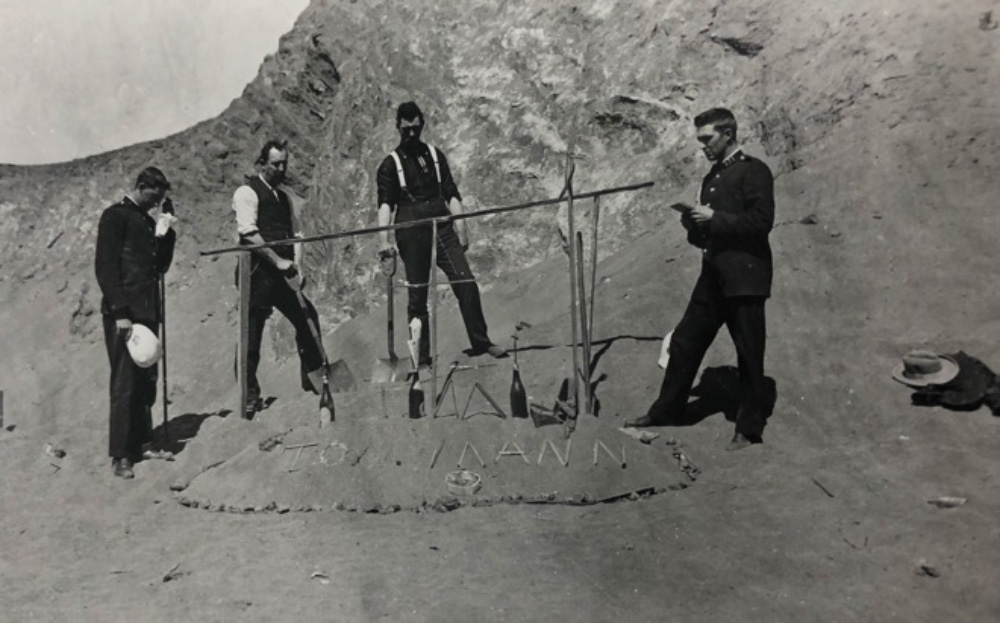
PHOTO 90/1/2653 “POLICEMEN ATA MOCK GRAVE FOR UNIONIST TOM MANN” Joseph Brokenshire, Photographer.
Violence erupted on January 9th with a pitched street battle between police and union men. Many were injured including women and children. The newspaper decried the police as ‘cowardly women beaters’ with reports the police used some of the rebel women as human shields. It had been Tom Mann’s tactical and ‘new departure’ to request at the mass rally on January 8th, that women march at the head of the procession2. Twenty eight protesters, including Tom Mann, were incarcerated in the Broken Hill Gaol.
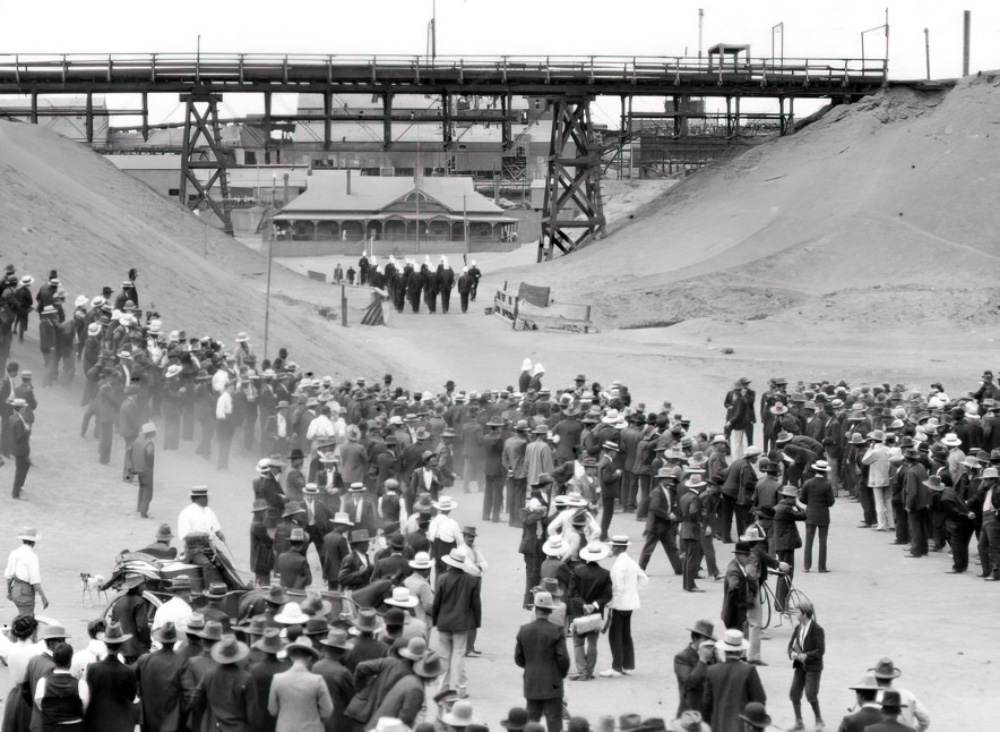
- Kearns, R.H.B (1993) Broken Hill 1894-1914: the uncertain years, Adelaide: Open Book. pp.48-50
- Barrier Daily Truth, February 1, 1909.
